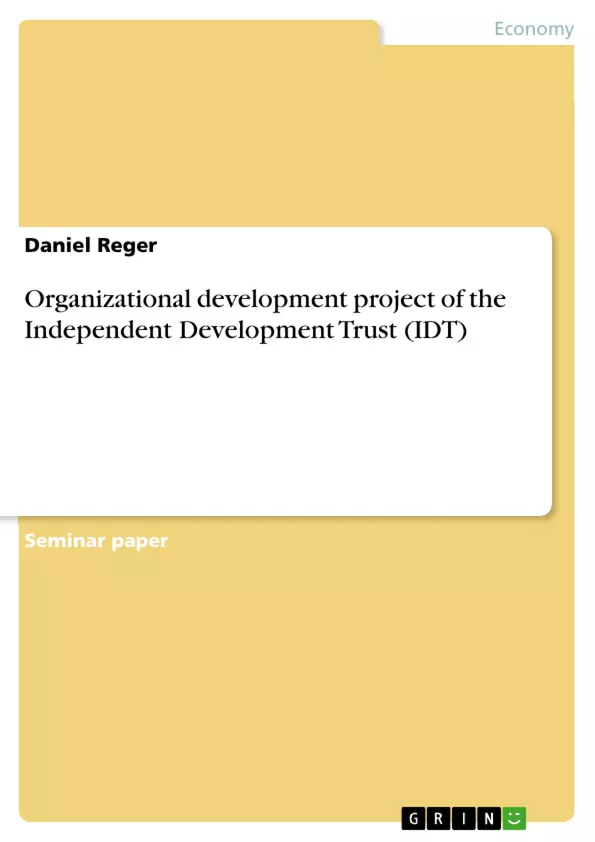The independent development trust (IDT) is a company, which supports the government in the implementation management of integrated social infrastructure and social development programmes in South Africa (IDT 2018). To ensure the full execution of their mandate, they are seeking for a re-organization of all internal processes. The scope of the transformation process will include the current service delivery model and strategy, the organizational structure and the human resource strategy. For the successful fulfilment it is essential to analyse the status quo and to define the aims of this project. To improve a company sustainable through a change process it is important to consider the three key success points structure, process and culture before beginning with the change process.
Table of content
Table of figures
1. Status Quo and objectives of the project
2. The 8 - Steps Process by J. p. Kotter
2.1 Establishing a Sense of Urgency
2.2 Creating the Guiding Coalition
2.3 Developing a Vision and strategy
2.4 Communicating the Change Vision
2.5 Empowering Employees for Broad-Based Action
2.6 Generating Short-Term Wins
2.7 Consolidating Gains and Producing More Change
2.8 Anchoring New Approaches in the culture
3. Consulting instruments for the change process
3.1 Storytelling
3.2 Events and team building activities
3.3 Resistance Radar
3.4 World Café
4. TOPSIM as a tool to accelerate the change process
5. Conclusion
Bibliography
- Citation du texte
- Daniel Reger (Auteur), 2018, Organizational development project of the Independent Development Trust (IDT), Munich, GRIN Verlag, https://www.grin.com/document/438161



